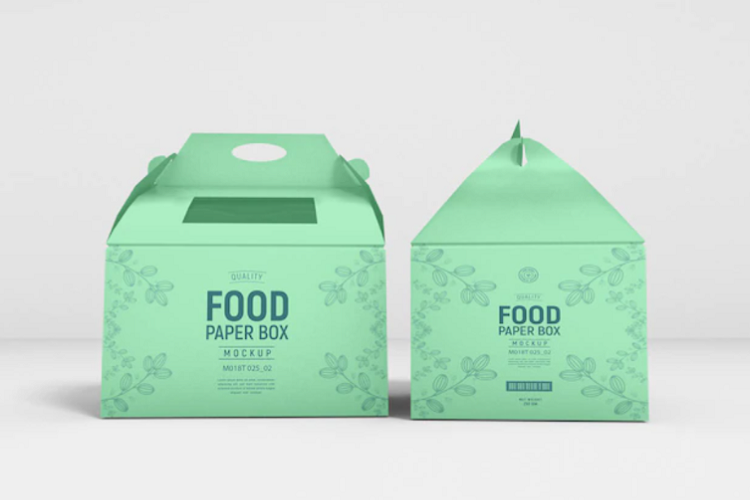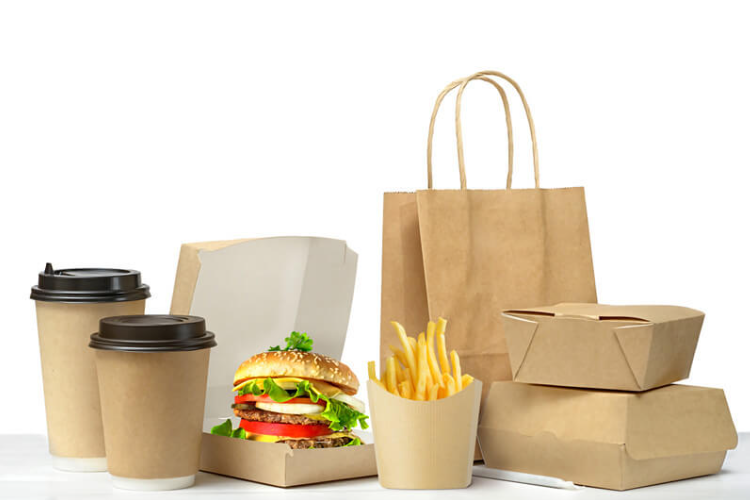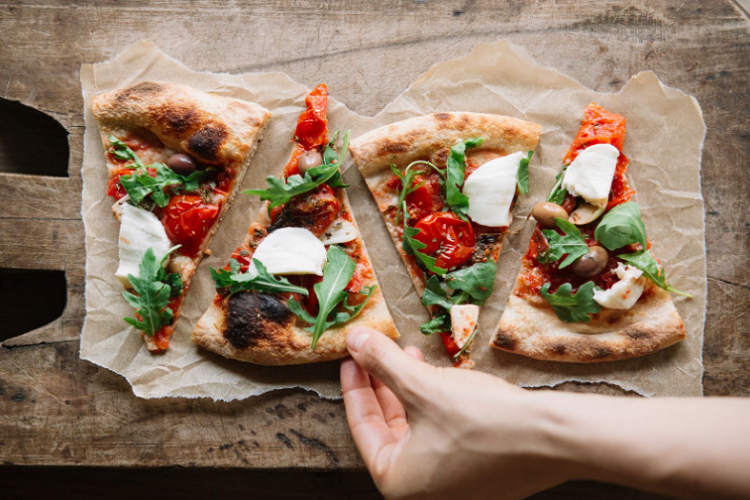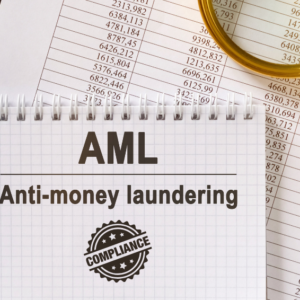Takeout food packaging has become an integral part of the restaurant industry. As more and more people are opting for takeout meals due to the pandemic, the demand for sustainable takeout packaging has also increased. But first, what are the benefits of food takeout packaging made of paper?
In this guide, we will explore the various types of paper used in food packaging, from the most commonly used to the more eco-friendly options. We’ll also discuss the benefits and drawbacks of each type of paper, so you can make an informed decision about which is right for your business.
The Benefits Of Food Takeout Paper Packaging?
Paper packaging for takeout meals is a must-have item these days. It protects the food from any spillage, as well as from the sights and smells of the surrounding areas. Its biodegradable nature makes it the perfect material to use for disposable meals.
The use of paper for food packaging has a long history. As one of the oldest manufactured materials, paper is inexpensive and widely available. Its lightweight properties and durability make it an ideal material for packaging products that need to be transported from the manufacturer to the consumer.
Sustainable takeaway food packaging, however, can be a bit more of a challenge. To get a restaurant meal safely to your door, packages need to be sufficiently strong to avoid leakage, while still being lightweight enough to carry. Paper has several qualities that make it a good choice for takeout food packaging; it is strong and durable, as well as available and affordable.
Additionally, paper is not only recyclable and biodegradable, but it also helps to reduce the amount of plastic waste that is produced. Paper packaging is made from renewable resources, meaning that it can be replaced quickly and is generally easier to recycle than plastic packaging. Paper packaging also helps to protect food during transport, keeping it fresh and safe. Furthermore, paper packaging is often designed to be leak-proof and tamper-resistant, ensuring that food stays safe while in transit.
However, the quality and type of paper used will have a noticeable impact on the sustainability of your food packaging. We will discuss the different types of paper used in takeout food packaging and their benefits below.
Understanding Different Types of Paper
When it comes to choosing the right type of takeout packaging for your food business, there are many different types of paper to choose from. However, it is important to understand the different types of paper used in food packaging and determine which type is best suited for your needs.
Recycled vs. Virgin Paper
Recycled paper is made from post-consumer waste, making it a much more sustainable option than virgin paper which is made from raw materials. Recycled paper has already gone through the production process, so it requires less energy and water to produce, resulting in fewer emissions. Additionally, recycled paper reduces the amount of waste sent to landfills and the number of trees cut down for paper production. Virgin paper, on the other hand, is often made from trees, which require large amounts of energy and water to produce, thus creating more emissions and contributing to deforestation. Ultimately, by choosing recycled paper for takeout packaging, consumers can help reduce their environmental footprint and contribute to a more sustainable world.
Sustainable takeout packaging can seem overwhelming at first, but it doesn’t have to be. Learning about the different types of paper used in food packaging is the first step to making better choices at the grocery store.
Common Types of Paper Used in Food Packaging
When it comes to takeout food packaging, sustainability should be a priority for businesses. Not only is sustainable takeout packaging better for the environment, but it can also be a great marketing tool to show customers that your business is environmentally conscious.
Paperboard

Sustainable takeaway packaging is an essential part of the modern food industry. Not only does it protect the food and make it easier to carry, but it also helps protect the environment by reducing the amount of packaging that goes into landfill sites. The most common type of takeaway packaging is paperboard.
Paperboard is a versatile material that is used in a variety of takeaway packaging solutions, including cereal boxes, pizza boxes, and takeout containers. Paperboard is made up of several layers of paper that are glued together and then pressed into shape. It is lightweight, cost-effective, and, most importantly, biodegradable.
Paperboard is generally the most affordable option for takeaway packaging solutions. It is easy to customize with a wide range of print surfaces and can have a glossy or matte finish. The structure and thickness of the paperboard make it easily reusable and recyclable.
Kraft Paper

Kraft paper is a great option for food packaging because it is durable, eco-friendly, and aesthetically pleasing. It is made from natural wood fibers, which are processed and combined with a range of other materials to create a versatile paper material that can be used to create a variety of food packaging.
Kraft paper is often used for takeout boxes, sandwich wraps, and food containers as it offers protective and durable coverage. The natural wood fibers in kraft paper offer a great aroma and enhance the taste and texture of food. The naturally brown color of kraft paper can be paired with a range of printed designs to create a unique and memorable brand for your business.
Also, adding barcoded labels to kraft boxes allows you to track and trace items as they are delivered to your customers. The fibers in kraft paper make it difficult for germs to spread, so your food will stay fresh. The durable structure of kraft paper means that it is easily reusable, and can be recycled alongside other paper and packaging materials.
Greaseproof Paper

Greaseproof paper is a special type of paper that is designed to be resistant to fats and oils. It has a water-resistant coating on one side and is usually waxed or oiled on the other side. As such, it can easily keep food items from leaking or becoming soggy. This makes greaseproof paper an excellent choice for packaging takeout meals that include fried foods or other dishes that could leak into the packaging. Because it is oiled on the other side, the printed side will have a glossy finish. This can be used to create a brand identity for your business by printing your logo and other details on the paper.
Eco-friendly Paper Options
Eco-friendly paper options for sustainable takeout packaging have been on the rise in recent years. Consumers are increasingly seeking products that are made from recycled and renewable materials.
Recycled Paper
Recycled paper is an eco-friendly and cost-effective material that can be used to package food items such as sandwiches, salads, and other takeaway items. Recycled paper is made from pre-consumer and post-consumer waste materials.
These materials are typically sourced from the recycling process, where paper and other materials are broken down and blended to produce new paper pulp. This pulp is then made into a variety of products ranging from plates, cups, and containers to packaging materials such as paper. Since recycled paper is made from waste materials, it is not directly extracted from natural resources. This reduces the strain on landfills as well as the use of new resources. Since the paper is newly produced, its quality is equal to that of conventional white paper.
The variety of shades, textures, and patterns produced from recycled paper makes your packaging stand out, as well as allows you to choose from a variety of textures that feel good in your hand. These unique characteristics make the recycled paper a great option for takeout packaging if you wish to stand out or show off the brand identity of your restaurant.
Biodegradable Paper
Biodegradable paper is one of the most popular materials used in takeout food packaging. This type of paper is made from materials like wood pulp, bamboo, cotton, and soy. Since these materials are naturally found in the environment, the paper that is made from them breaks down easily in a landfill, absorbing its moisture and turning it into the soil in the process.
Because of their sustainability, biodegradable papers are often used for takeout containers, cartons, and wraps. These materials are tested to meet certain standards for biodegradability, but there are currently no certifications or “organic” labels for paper. So if you’re looking for sustainable takeout packaging that’s completely organic, that testing record for biodegradation is the best way to know you’ve found the right material.
Compostable Paper
Compostable paper is made from plant-based materials such as cornstarch, bamboo, wheat, and sugarcane. This type of paper is designed to break down quickly in a composting environment and is certified by organizations such as the Biodegradable Products Institute. It is important to note that not all compostable materials are the same, and there are various standards and certifications when it comes to compostable materials.
Conclusion
While there are a variety of paper materials that you can use for takeout food packaging, compostable and biodegradable papers offer a sustainable option that is widely accepted as being environmentally friendly. They are also able to hold different types of food materials, and their eco-friendly credentials mean that customers and retailers alike are more likely to buy and reuse them instead of throwing them away.
Sustainable takeout food packaging is not something that customers look for when they’re ordering food to go, but it’s an important issue that restaurants should consider. The world of sustainable takeout packaging is growing, with new materials emerging every year. Restaurants should not feel like they have to meet this issue with plastic bags and takeout containers alone. There are sustainable, affordable alternatives available, and they can help restaurants lower their waste footprint.






